26 June 2023 – There is pleasant excitement on the RV Belgica this morning, as the ship leaves Reykjavik harbour and steams to the first sampling station. No far journey ahead, as the first days of the expedition will be spent in a fjord just north of the Icelandic capital. The fjord in question is the Hvalfjördur, literally translated as the ‘whale fjord’. It only takes less than two hours to arrive at station HF3, which gets the scoop of being the first to be sampled. That first sampling is always a crucial moment, as it is definitely better for morale to start with a success. However, only one thing is certain at this point: the weather will certainly not be a killjoy! The water is calm, the wind absent, and there is pleasant sunshine.
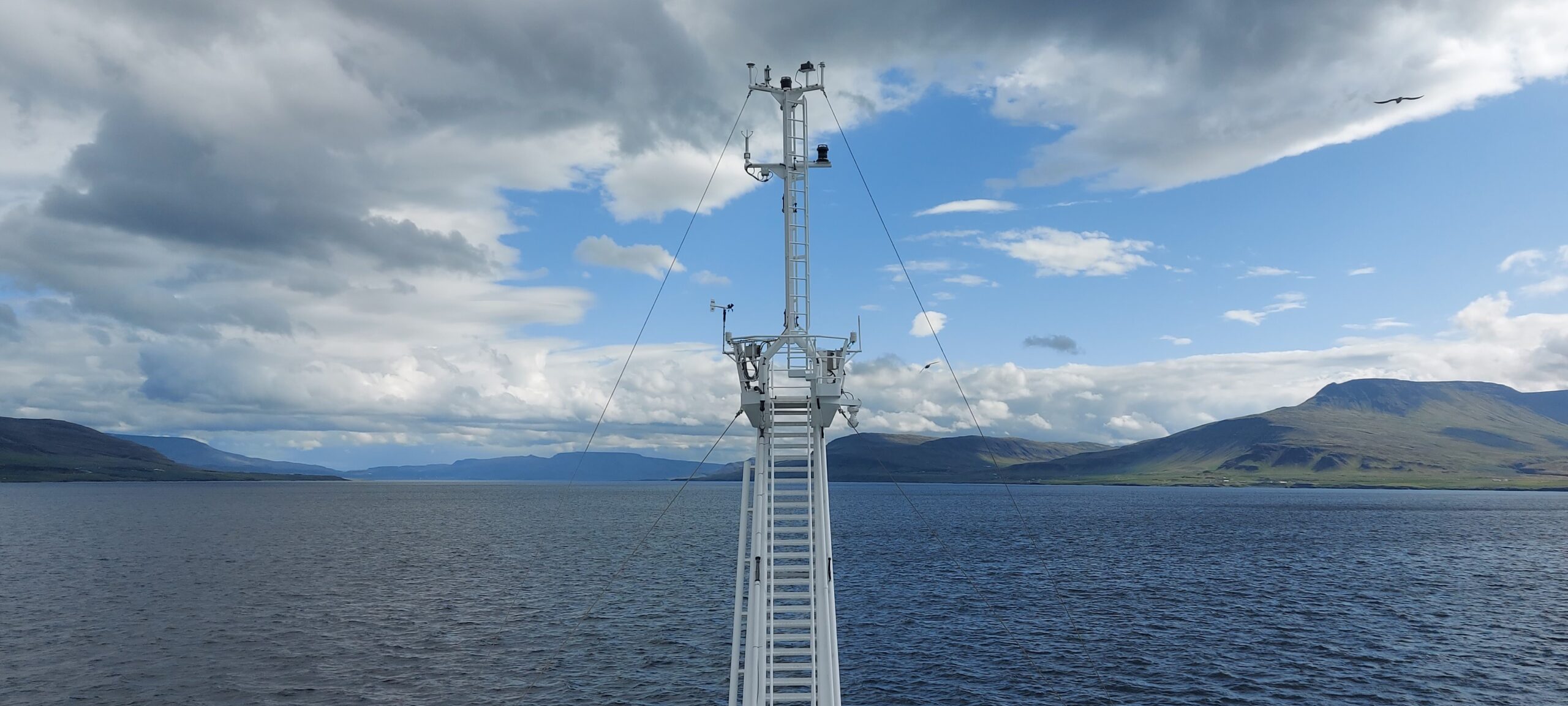
The DEHEAT campaign kicks off with a CTD deployment, which will become the regular start of activities at each sampling site. CTD stands for conductivity, temperature and depth, parameters that are measured by sensors that are incorporated in a construction that further includes 24 so-called Niskin bottles arranged in a rosette. For simplicity, we refer to the whole thing simply as ‘CTD’.
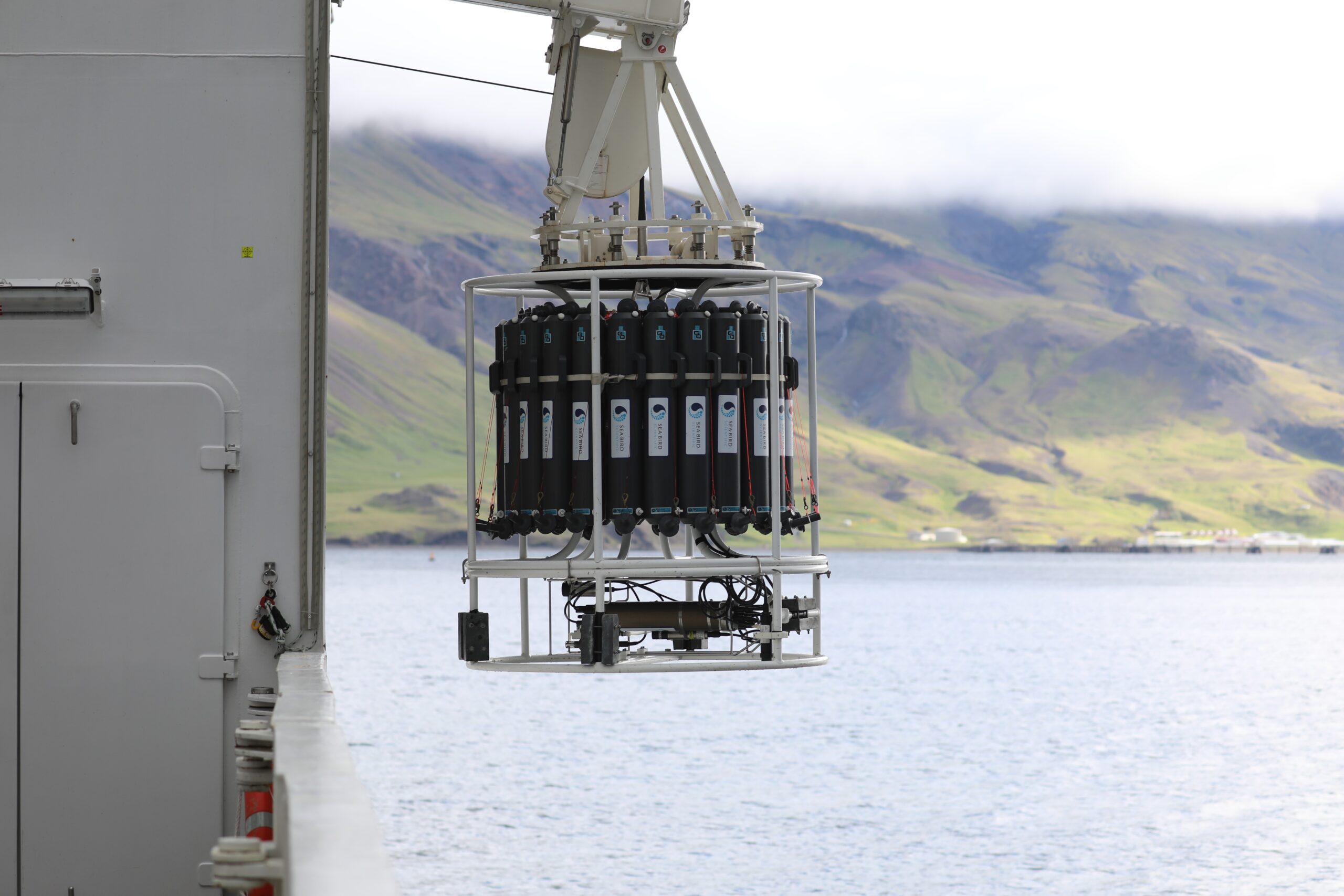
The CTD-construction is an essential oceanography instrument. As the CTD descends through the water column to just above the bottom, the depth and the changes in temperature, salinity and oxygen content of the water can be monitored in real time on a computer screen. Depending on the course of these parameters, the scientists will decide at which depths water samples will be taken. That is where the Niskin bottles come in, as they can be closed remotely one by one with a simple mouse click. This is done during the rosette’s journey back to the surface.
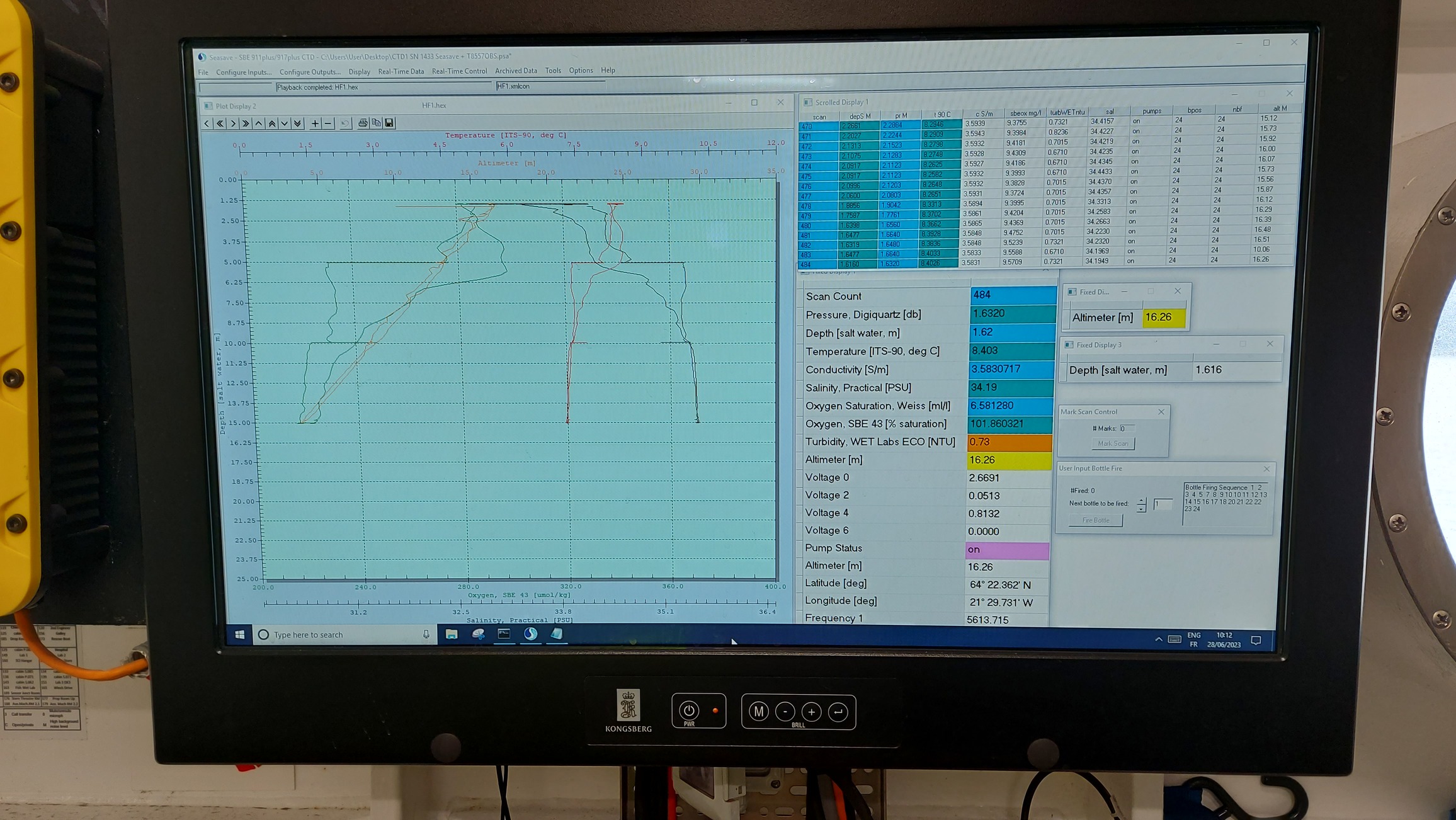
During the first trip of the CTD to the bottom and back up, the wet lab where the computer on which the CTD parameters are monitored was particularly crowded. Everyone wanted to personally witness the very first data that appeared during the DEHEAT expedition. In the following days, this moment will be much less attended. Of course, this has nothing to do with a loss of interest but is entirely due to the fact that during the very first CTD, no other activities had yet started. Things will be very different at subsequent stations, and the timing of activity from different scientists will also be increasingly divergent as a result.
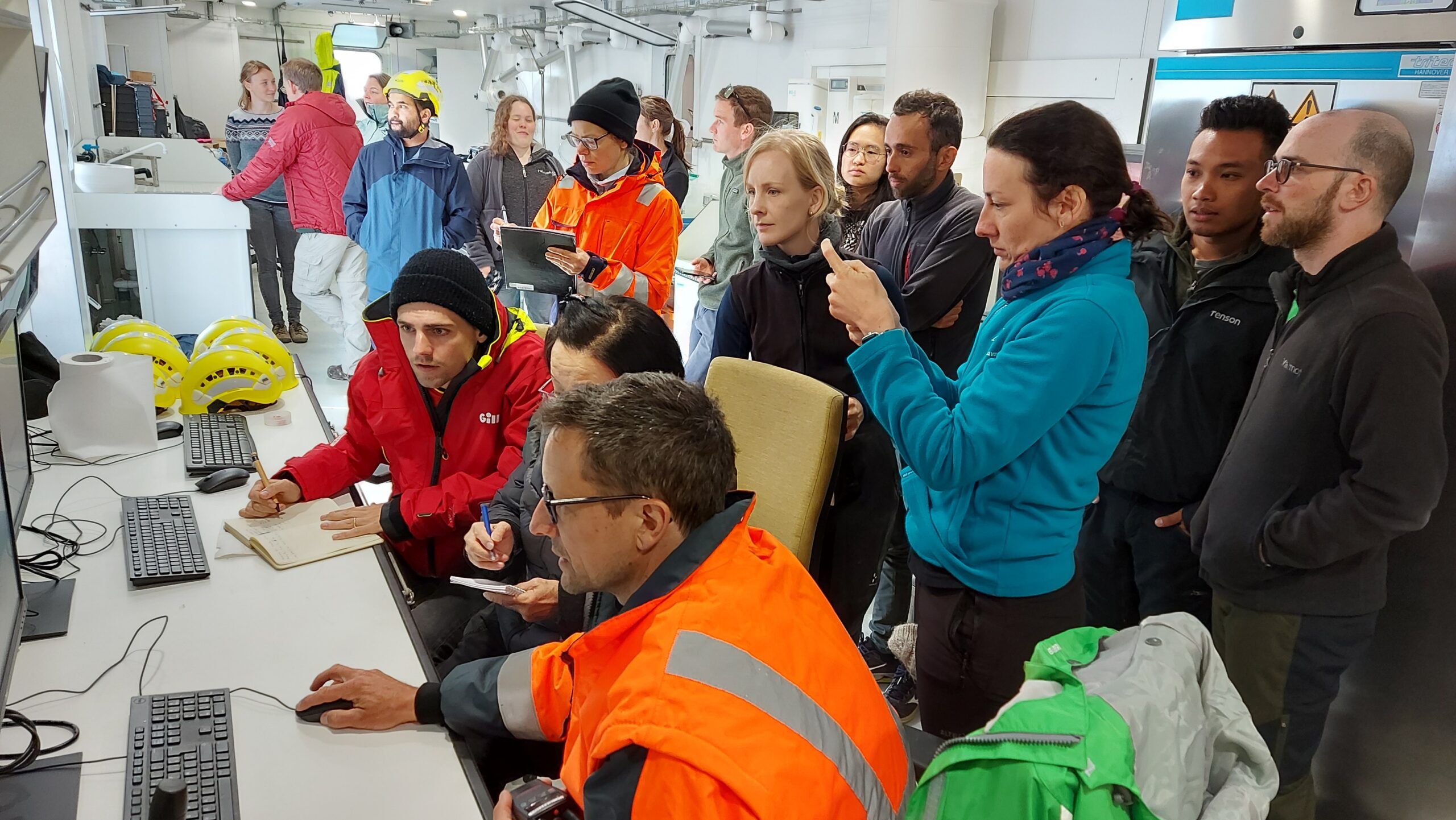
Later, it will therefore mainly be some regular faces who will be present at every CTD, make the decisions on water sampling and close the Niskin bottles. Besides DEHEAT chief scientist Sebastiaan van de Velde, the permanent CTD team consists of Kate, Lei and Felipe. It is also they who will eventually sample the contents of the Niskin bottles in different ways for different purposes.
A decent administration is involved as everyone on board wants their share of the water, and one water turns out not to be the other … There is a need to collect samples for determining alkalinity, dissolved inorganic carbon, nutrients, Silicium, metals, oxygen, Magnesium & Strontium, salinity, … and all of these samples are needed in different volumes, need to be stored in different recipients, require different processing and need to be brought to different places on the ship. To complicate matters further, some samples have to be collected only in the fjord, or later only on the shelf, or only at certain depths, and various expedition participants come with large or even larger bottles to get their share of water as well …
The important task of keeping record, not only for CTD sampling but for just about all samples taken during the expedition, falls to Kate Hendry. Kate is an ocean climate scientist, chemical oceanographer or biogeochemist at the British Antarctic survey. She is part of the science and steering groups of DEHEAT, and has also been designated as the expedition’s second chief scientist.
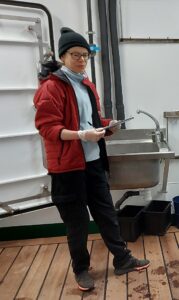
Kate explains what that means: “The co-chief scientist position involves being there as a sanity check and a sounding board for the chief scientist. On an expedition like this, there is a lot to think about and keep an eye on, and there are a lot of important decisions to be made. My task is to come up with ideas, suggestions, alternatives, solutions to any problems that may arise. But to be honest, Sebastiaan is doing such a great job, so it’s not been too bad for me at all, it’s all running very smoothly”.
On the task of keeping track of all that’s going on, she adds: “Next to the science, I’m focusing on the data management, looking after the paperwork, making sure everything is archived. The last thing you want is some critical paperwork going missing, so I make sure everything is scanned and archived. This sometimes turns out to be even useful months or years after a cruise, when something confuses or puzzles people, creating a need to go back to the vital original logs”.
Back to the CTD sampling now. Felipe Sales de Freitas, chemical/geochemical oceanographer and postdoctoral researcher at the Université Libre de Bruxelles, is directly involved in the DEHEAT project and takes care of what can be considered the ‘small volume CTD sampling’ for a whole range of goals, most of which require the water from the Niskin bottles to be filtered.
“But first we have to go through the sacred ritual of rinsing every recipient or sampling tool three times with the actual water that is going to be sampled” he laughingly explains. “Next, we squeeze water through syringes and filters until our thumbs are completely cramped”.
Felipe further explains his role in the DEHEAT Belgica expedition as follows: “In this expedition, I am basically an extra pair of hands in various sampling actions because of my experience in field sampling and analysis. Later on, I will use a lot of the output data of the sediment coring and water analysis for the DEHEAT geochemical modelling”.
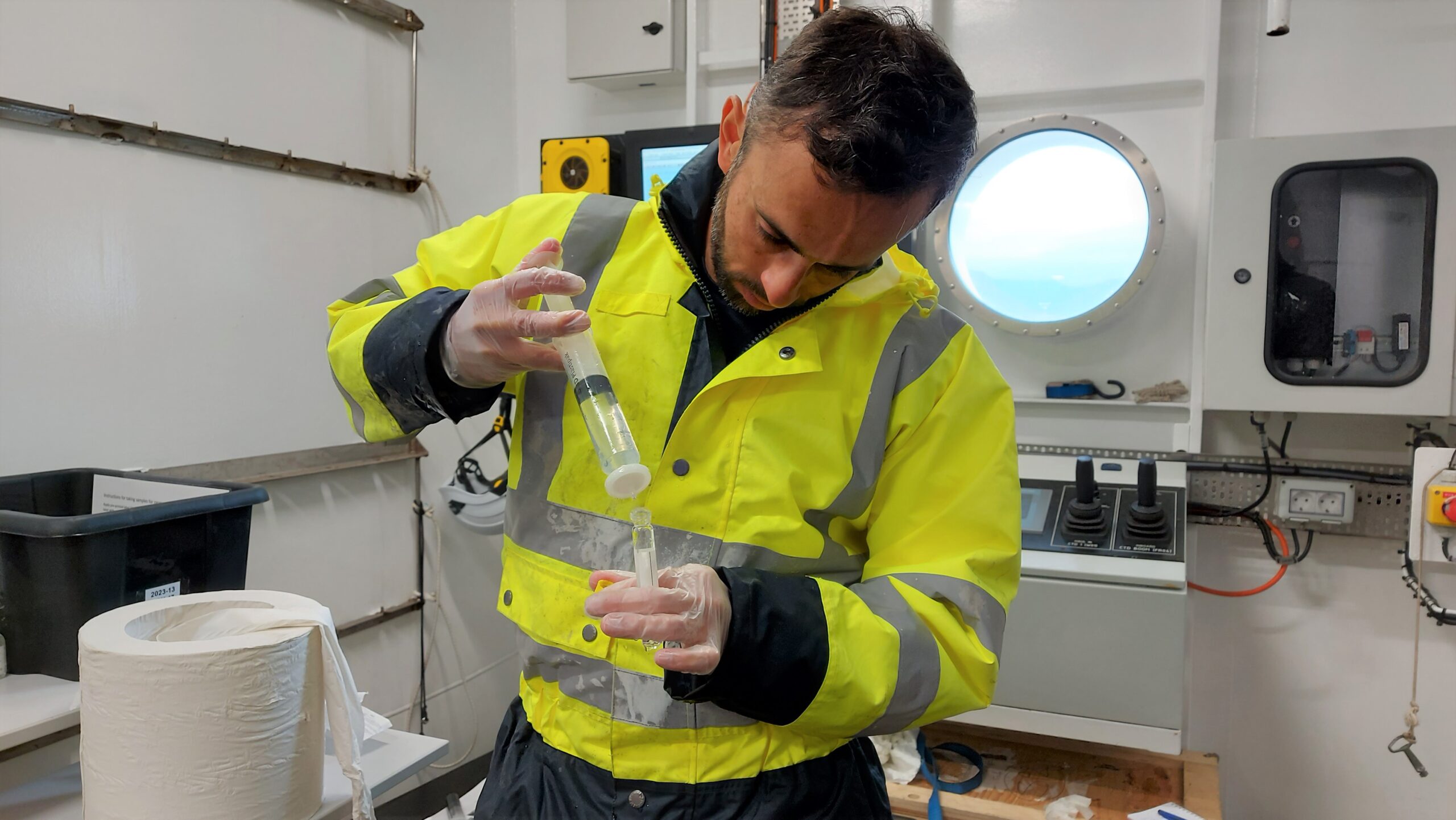
Lei Chou, meanwhile, drags larger containers back and forth between the Niskin bottles and a more sophisticated filter setup that she provided herself, that is better suited to filtering larger volumes. She is a marine biogeochemist and emeritus professor of the Université Libre de Bruxelles and remains active and connected to both research and training of students.
Lei had very little time to prepare for the DEHEAT expedition but is making the most of it: “I was offered a berth on RV Belgica only weeks before the start of the expedition when a place suddenly opened due to the cancellation of another participant. I had to move quickly, sending two suitcases of equipment to Reykjavik as the Belgica had already left its home port of Zeebruges. After all, I want to take the opportunity to collect additional samples for suspended matter content, nutrients, metals and chlorophyll to complement the already very ambitious DEHEAT plan”.
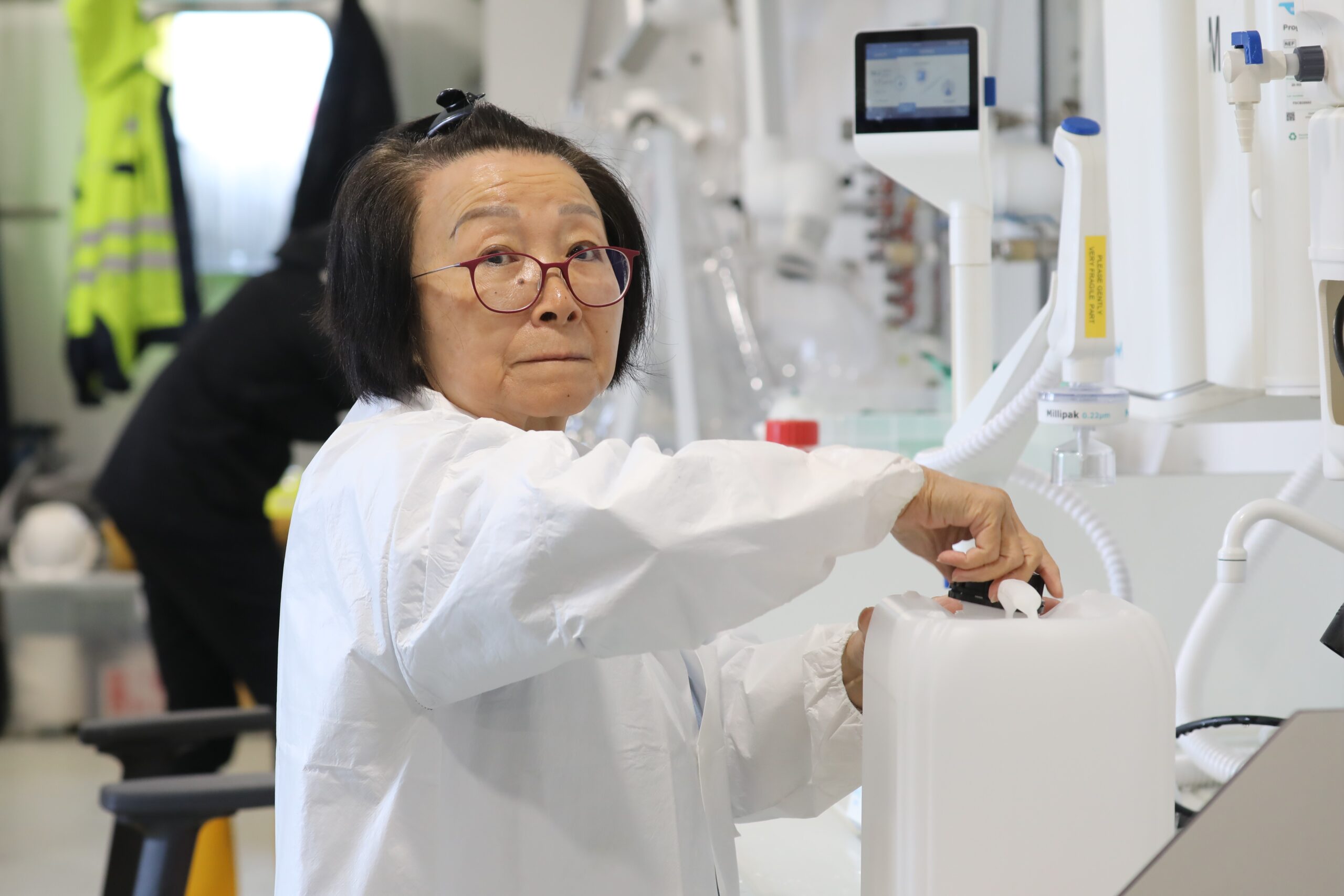
We can rest assured that Icelandic seawater will hold far fewer secrets after the analysis of the DEHEAT samples.
